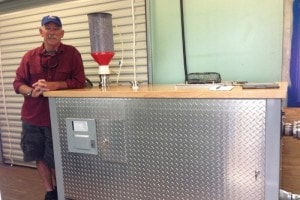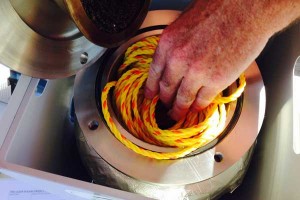A Plastic Waste Conversion Demonstration at Clean Oceans International HQ
Watch as Captain Homer transforms plastic trash into unrefined diesel fuel. There is a lot to say about the potential of this technology, but perhaps the most important is that this is one way to handle plastic ocean pollution in which the plastic is not just removed from the ocean, but also repurposed.
Plastic Wast Conversion: A Key Driver of the New Plastic Economy
Plastic Pollution is a global epidemic with a particularly dramatic impact on the marine environment. The problem required the international demographic a generation to create and we should expect that it would require a similar global scope and time scale to manage. The only force strong enough to motivate a multinational generation to do something collectively is profit.
The Business Potential of Plastic Waste Conversion
|
Clean Oceans International is working to prove that profit can transform the plastic pollution landscape in a positive fashion on a global scale. In 2015 COI took delivery of the first portable plastic waste conversion (PPWC) system built in America to respond to the global crisis.
The PPWC systems can generate diesel, gasoline or other petroleum products continuously from specific plastic waste streams, including most packaging. Conversion is done through thermal-depolymerization using safe clean electrical power. Plastic waste conversion is clean and quiet and suitable for small-scale installation. |
Portable Plastic Waste Conversion Collaboration
|
COI is collaborating with Oregon State University School of Chemical Engineering to take PPWC technology from prototype to profitable while maintaining independent academic oversight on the process and the product for human and environmental safety. This abstract highlights Dr. Rochefort and his students work with plastic waste conversion.
COI is also collaborating with PDO Technologies Inc., dedicated to keeping plastic waste out of the natural environment. Kevin DeWhitt is the founder of PDO Technologies Inc., who, for the past 7 years has advanced its plastic waste conversion technology, making it economically efficient, carbon neutral and operable in the most remote corners of the world. For an introduction to their process, click here. |
Empowering communities all over the Globe
PPWC is as applicable in remote communities as in metropolitan areas, providing local recycling options, eliminating the need for expensive/carbon intensive transport and handling operations. Fuel and other resulting products can augment supplies already required to conduct the local waste handling processes. This win-win situation gives waste managers a quick return on their investment, minimizes the land-filling of plastic, and reduces the amount of loose plastic entering the environment.
COI’s 2015 TedX talk in NYC discussed how PPWC could be used at sea as well as in smaller, more remote communities.
COI’s 2015 TedX talk in NYC discussed how PPWC could be used at sea as well as in smaller, more remote communities.
Frequently Asked Questions / FAQs
There are often questions that arise when speaking about pyrolysis and plastic waste conversion. You can learn more about that here.


